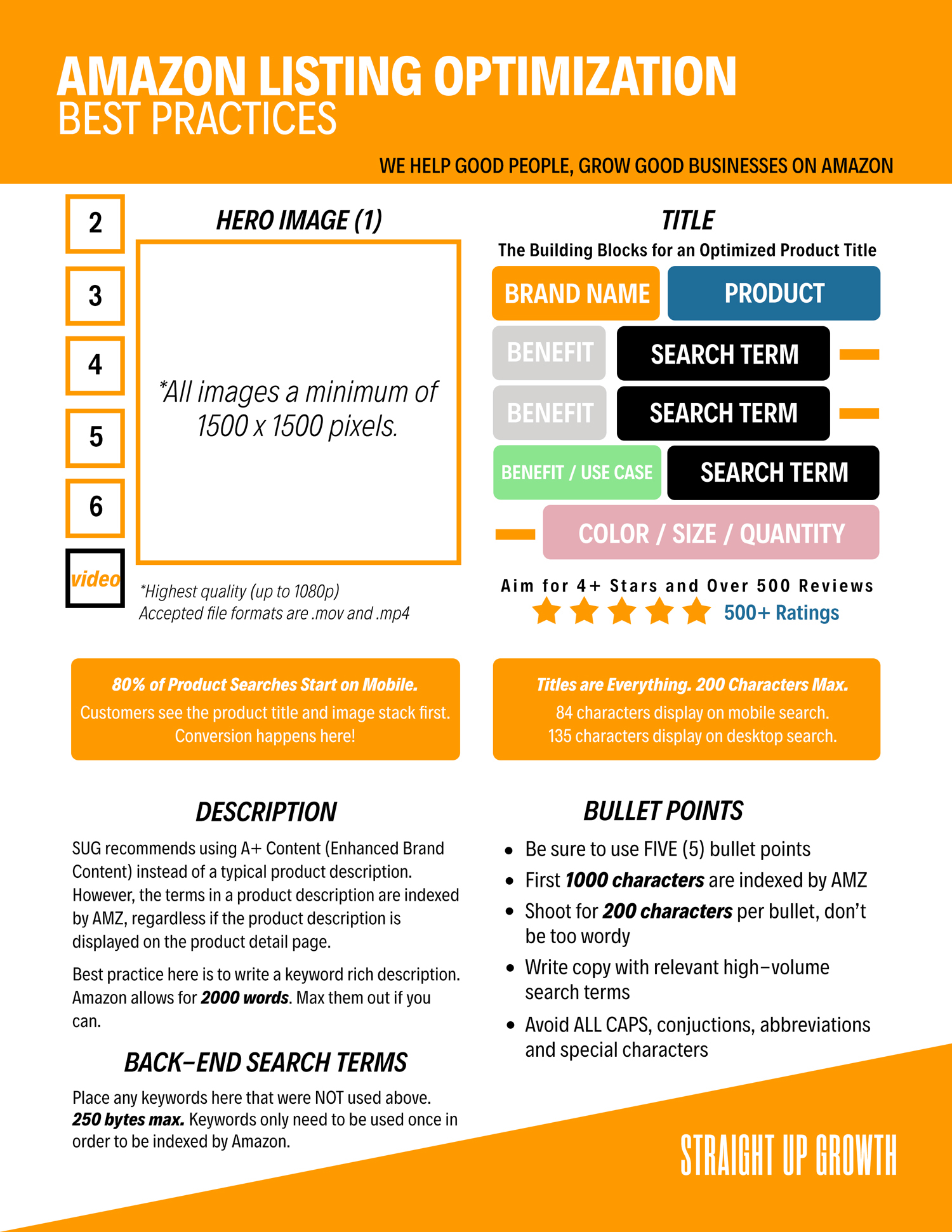Beyond the Buy Box: Unleashing Your Brand for New Amazon Customers
Introduction: Moving Beyond the Buy Box
In the dynamic landscape of e-commerce, the coveted Buy Box on Amazon has long been the pinnacle for sellers vying for increased customer attention and sales. However, as the marketplace evolves, it becomes increasingly clear that a comprehensive strategy for success extends well beyond the Buy Box.
To thrive in the bustling marketplace of Amazon and captivate a new audience, sellers must strategically navigate various aspects to stand out amidst the digital aisles. Building a strong brand presence, with a cohesive identity reflected in product listings and an Amazon Storefront, fosters trust and loyalty.
Let’s explore how new and veteran Amazon sellers can improve their new customer acquisition strategy on Amazon.
What is Amazon’s Buy Box?
The Buy Box on Amazon is a prominent and sought-after feature on product pages. It is the box on the right side of the page that allows customers to directly add items to their shopping carts. The Buy Box prominently displays the product's price and a "Buy Now" or "Add to Cart" button.
Amazon Sellers seek to become the default seller of all their products. When multiple sellers offer the same product, Amazon designates one of them as the default seller in the Buy Box, prompting customers to purchase from a verified seller. This prevents counterfeit products from being sold under your brand’s name on Amazon.
While there is no official confirmation on the specific factors that influence Boy Box placement, here’s some key details to keep in mind:
- Product and Brand Details: This includes the product’s price, product inventory levels, average fulfillment time, product ratings, and order defect or return rates
- Rotating Buy Box: In situations where multiple sellers meet the criteria, Amazon may rotate the Buy Box among them to provide fair exposure.
- Exclusion of Certain Products: Some products, like those in restricted categories or with limited availability, may not have a Buy Box.
- Third-Party Seller Competition: The Buy Box is not exclusive to Amazon itself. 3PS can compete for the Buy Box as well
Building a Strong Brand Presence on Amazon
On Amazon, where choices abound and competition is fierce, building a robust brand presence is not just a luxury; it's a strategic imperative. The importance of this endeavor goes beyond mere aesthetics—it's about crafting a narrative that resonates with customers and differentiates your products from the multitude of options available.
A strong brand presence serves as a beacon, guiding potential customers through the crowded pages of the online marketplace and leaving a lasting impression.
Stand Out in the Crowd
Among a sea of products, a strong brand can act as a lighthouse, cutting through the noise and capturing the attention of shoppers. With an instantly recognizable logo, consistent branding elements, and compelling storytelling in your product listings, your brand becomes memorable, establishing a connection with consumers that goes beyond individual transactions. This visibility is the first step towards attracting new customers and fostering brand loyalty.
Consistency in branding among listings & storefront, coupled with positive customer reviews, creates a sense of reliability and credibility. When customers trust your brand, they are not just making a purchase; they are making an investment in a known and reputable entity.
Competitive Edge in a Saturated Market:
In a marketplace where a variety of sellers offer similar products, a strong brand provides a competitive advantage. Customers gravitate towards brands they know, steering clear of generic or unknown alternatives. A well-established brand allows you to set yourself apart, showcase unique selling propositions, and create an emotional connection with consumers. This differentiation becomes a powerful asset in a marketplace driven by customer choices.
Long-Term Success and Customer Loyalty:
While short-term tactics may drive immediate sales, building a strong brand presence is an investment in long-term success. A brand isn't just about a single transaction; it's about building relationships. Satisfied customers who identify with your brand are more likely to become repeat buyers and advocates, driving sustained growth and stability. The journey of building a brand on Amazon is a strategic endeavor that reaps rewards not just in sales but in the loyalty and advocacy of a dedicated customer base.
Optimizing Images for Maximum Impact
Within the bustling digital marketplace of Amazon, where first impressions matter, product images take center stage as the initial encounter between your offering and a potential customer. A well-crafted product image isn't just a picture; it's the opening chapter of a narrative that entices customers to delve deeper into the story of what your product has to offer.
Here’s some of Straight Up Growth’s best content practices:
Hero Image
- All images must be a minimum of 1500 x 1500 pixels
- Up to 6 images and a video
- Should be in highest quality (up to 1080p)
- Must be .mov or .mp4 file
Title
Here are the building blocks for an optimized product title:
- Brand Name
- Product
- Benefit + (Search Term) -
- Benefit + (Search Term) -
- Benefit / Use case + (Search Term) -
- Color / Size / Quantity
Description
- SUG recommends using A+ content (Enhanced Brand Content) instead of a typical product description.
- The best practice is to have a keyword rich description
- Amazon allows for 2,000 words...Max them out if you can!
Bullet Points
- Be sure to include at least 5 bullet points
- First 1,000 characters are indexed by Amazon
- Shoot for 200 characters per bullet
- Write copy with relevant high-volume keywords
- Avoid All Caps, conjunctions, abbreviations, and special characters
Back-End Search Terms
- Place any keywords here that were not used in the above sections
- 250 bytes max
- Keywords only need to be used once order to be indexed by Amazon
Here's a handy image from SUG's content department!

Amazon Marketing Cloud and DSP
Amazon offers two powerful advertising solutions for sellers looking to enhance their visibility and reach on the platform: Amazon Demand-Side Platform (DSP) and Amazon Marketing Cloud (AMC). These tools offer advanced targeting options, actionable insights, and the ability to tailor advertising efforts for maximum impact on and beyond the Amazon platform.
Here's how sellers can leverage these tools:
Amazon Demand-Side Platform (DSP):
- Audience Targeting: Utilize DSP to target specific audiences based on their online behavior, interests, and demographics. Leverage Amazon's first-party data to reach customers who have previously interacted with your products or similar products.
- Cross-Channel Advertising: Extend your advertising reach beyond Amazon by using DSP for cross-channel advertising on Amazon-owned and third-party sites. Create cohesive advertising campaigns across various platforms to increase brand visibility.
- Programmatic Advertising: Implement programmatic advertising strategies with DSP to automate the buying process and target audiences in real-time. Optimize campaigns based on performance data and adjust bids for better results.
- Brand Building and Awareness: Use DSP to build brand awareness and drive consideration. Target customers who are likely to engage with your brand but may not have made a purchase yet.
- Dynamic Creatives: Incorporate dynamic creatives in your DSP campaigns to tailor ad content based on user behavior and preferences. Test different creative elements to identify the most effective combinations for your target audience.
Amazon Marketing Cloud (AMC):
- Audience Insights: Leverage AMC for in-depth audience insights. Understand your audience's behavior, interests, and shopping patterns on and off Amazon. Use these insights to tailor your marketing strategies and create more personalized campaigns.
- Custom Audience Segmentation: Create custom audience segments using AMC data. Identify high-value customer segments and tailor your advertising approach to each segment's preferences.
- Data-Driven Campaigns: Base your advertising campaigns on data-driven insights from AMC. Identify trends, optimize your targeting, and refine your strategies based on actionable data.
- Personalized Messaging: Craft personalized messaging for different audience segments using the insights from AMC. Deliver targeted and relevant content to improve engagement and drive conversions.
- Cross-Channel Marketing: Integrate AMC data into your overall marketing strategy, including both online and offline channels. Coordinate your advertising efforts across various touchpoints to create a seamless customer experience.
- Attribution Modeling: Leverage AMC's attribution modeling capabilities to understand the impact of various marketing channels on customer conversion. Use this information to allocate budget effectively across channels.
Leveraging Customer Reviews and Feedback
Customer reviews serve as a direct line of communication between sellers and their audience, offering invaluable insights into product performance, customer satisfaction, and areas for improvement. These reviews build trust and credibility, acting as social proof that can sway hesitant customers towards making a purchase. Amazon's algorithm considers reviews in search rankings, meaning a higher quantity of positive reviews can enhance a product's visibility.
Engaged sellers actively responding to reviews, addressing concerns, and expressing gratitude demonstrate a commitment to customer satisfaction that resonates with discerning shoppers.
Here’s some best practices for utilizing customer feedback on Amazon:
- Respond to Reviews: Actively monitor and respond to customer reviews, both positive and negative. Responding shows that you value customer feedback and are committed to addressing concerns.
- Address Negative Feedback Promptly: Respond to negative reviews promptly and professionally. Offer solutions, apologize for any inconvenience, and demonstrate your commitment to customer satisfaction.
- Use Feedback for Product Improvement: Analyze customer feedback to identify areas for product improvement. If multiple customers mention the same issue, consider making necessary adjustments to enhance product quality.
- Highlight Positive Reviews in Marketing: Showcase positive reviews in your marketing materials, such as on your Amazon Storefront, website, or social media. Positive testimonials can build trust and credibility with potential customers.
- Monitor Competitor Reviews: Monitor reviews for competing products to understand customer preferences and identify areas where your product can excel. Use this information to refine your marketing strategy.
- Implement Customer Suggestions: If customers provide suggestions for product improvements or additional features, consider implementing those that align with your brand and product strategy.




